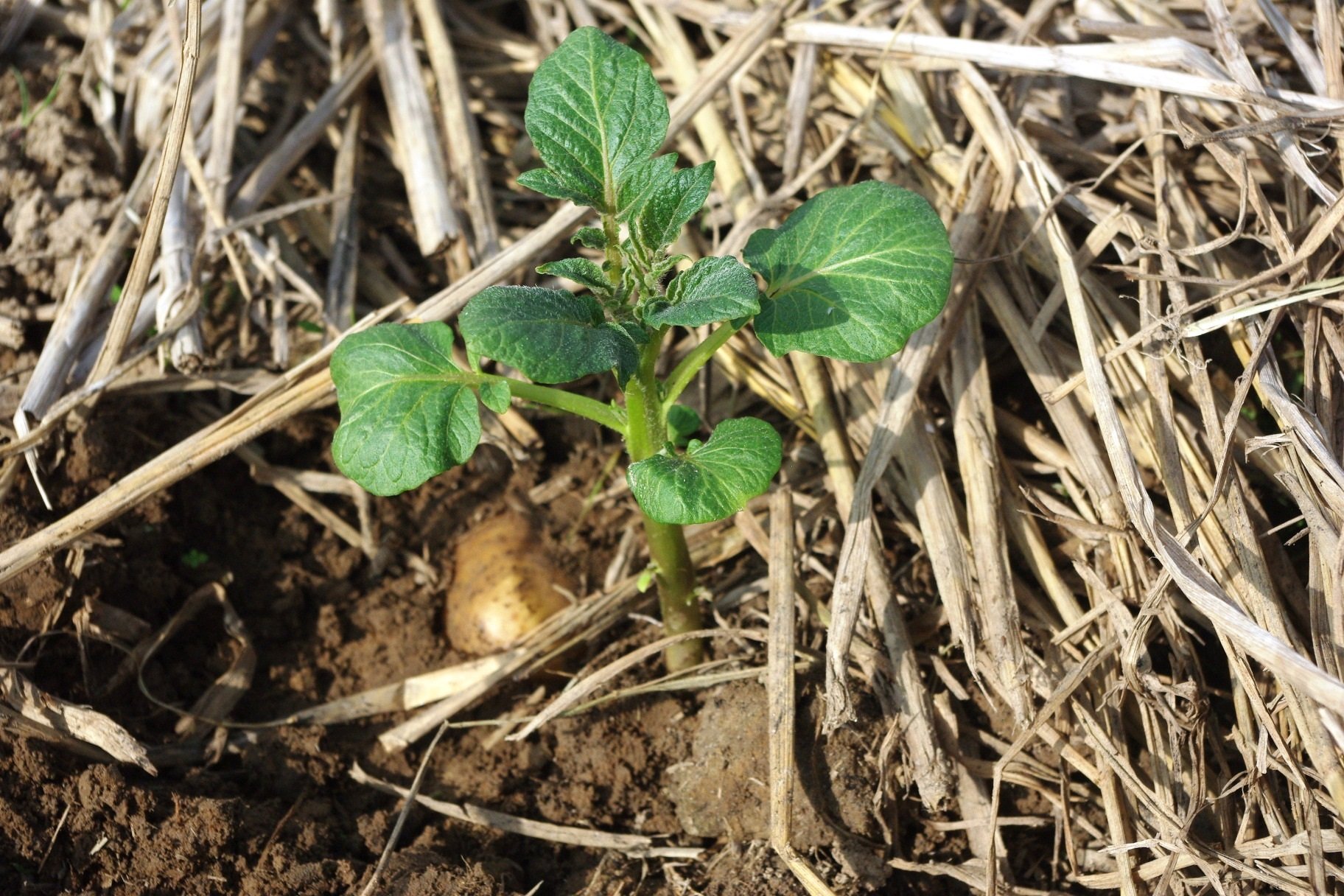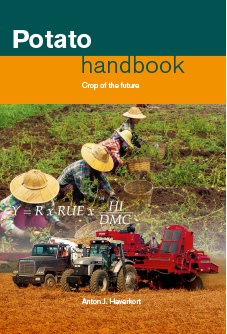
Seed tubers are planted in small holes or shallow planting furrows made by the planting machine. Usually the depth of planting is such that the top of the seed tuber is at the mean soil level. Some varieties with superficially growing tubers or varieties that are sensitive to greening or in soils that easily crack, growers plant deeper if this helps according to their experience. Subsequent hilling assures an adequate growing bed for the newly formed tubers.
If the objective is to achieve full ground cover as soon as possible after emergence as to intercept as much solar radiation for high yield, the optimal planting pattern is square. If 4 plants per square meter is the objective, the spatial arrangement is 50 cm x 50 cm, the same distance between the rows and between the plants within the row. This pattern, however, has a few draw backs: There is not enough space between the plants to form a proper hill and not enough space for mechanical operations by tractor. This pattern is observed on wide beds in the tropics. A more common distance between the rows is 75 cm such as in continental Europe or 90 cm between the rows in the UK and in the USA .To arrive at 4 plants per m2 the distance between plants within the row then has to be 35 cm respectively 28 cm.
Advantages of planting in beds
A narrow row distance is advantageous for early crops that are harvested prematurely to fetch premium prices. Larger row distances allow bigger machines with wider tires and the build-up of larger hills which reduces the chance of tuber exposure to rain and sun. But it takes longer for the crop to fully cover the soil and intercept all solar radiation. The narrower spacing within the row increases interplant competition. Another planting pattern is planting in beds with their centers spaced 150 or 180 cm apart with two or three rows and alternating placement of the tubers. Advantages of planting in beds are a more even distribution of the plants over the field, approaching the square pattern, and a slightly better use of the water. Other types of beds are the ‘lazy beds’ sometimes used in gardens where the seed potatoes are covered with mulch of straw or other organic material. Raised beds are often applied in tropical highlands with high rainfall. Such beds are about 150 cm wide and 50 cm high with a rounded top. They are separated by small paths of about 50 cm wide. Such beds avoid flooding of the crop and facilitate easy access by hoe for planting, hilling, weeding and harvesting.

At the same seed rate, narrower row spacing means wider spacing of the plants within the row, earlier canopy closure and less competition for soil resources which leads to higher yields. The differences decrease with a longer growing season. Wider row spacing, on the other hand, permits larger hills that better protect the tubers and makes tractor propelled mechanical operations more efficient. The wider the row spacing the less operating hours per hectare are required. Wider rows with larger ridges lead to warmer soil in spring and less fluctuation of the temperature throughout the day.
Want to keep reading about the potato crop and decisions at planting?
Our Potato handbook is a global potato university in 1 book!
Buy your copy today and get a one-year free subscription to PotatoWorld magazine.

